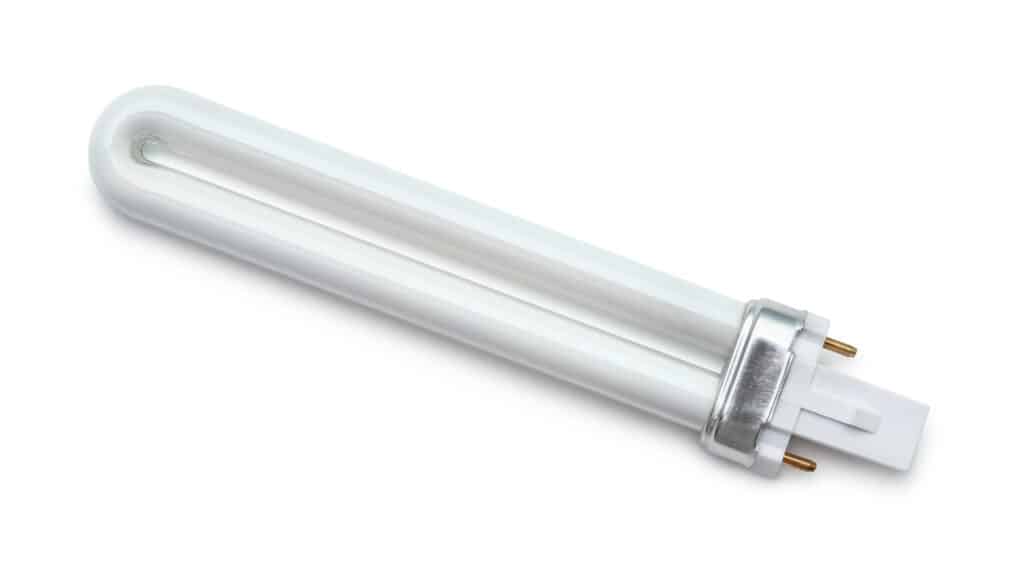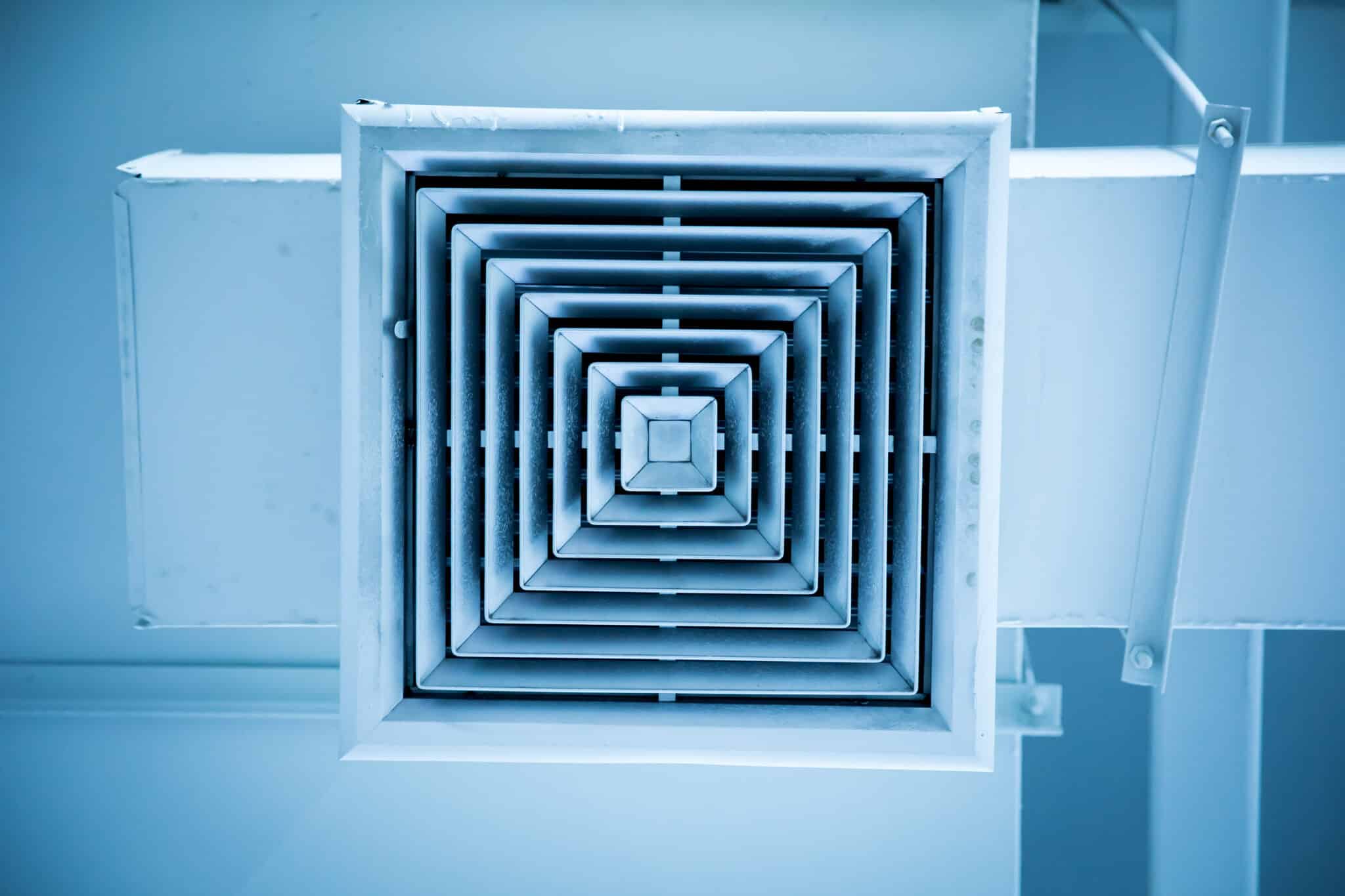
Why UV Lights Matter in HVAC Systems
Indoor air quality is a top concern for homeowners in Saginaw, TX, and Arlington, TX, especially as allergy season peaks in March. One of the most effective ways to enhance air quality and maintain a cleaner HVAC system is by installing UV lights.
These powerful devices help eliminate airborne contaminants, improving both efficiency and air purity. As pollen levels rise and temperatures fluctuate, investing in UV lights can make a noticeable difference in your home’s comfort and health.
The Role of UV Lights in HVAC Systems
UV lights play a crucial role in maintaining a cleaner and healthier HVAC system by eliminating bacteria, mold, and viruses. Installed within the system, these lights neutralize airborne contaminants before they circulate through your home.
This added layer of protection is especially beneficial in humid environments, where microbial growth thrives inside air handlers and ductwork, affecting both air quality and system efficiency.
In Saginaw and Arlington, early spring brings damp conditions that create the perfect environment for mold and bacteria to grow inside HVAC components. Over time, this buildup can restrict airflow, forcing the system to work harder and increasing energy consumption. If left untreated, it can also lead to unpleasant odors and costly repairs.
UV lights effectively combat this issue by breaking down microorganisms at a molecular level, keeping your system clean and functioning optimally. By preventing microbial growth, UV lights not only improve indoor air quality but also enhance overall HVAC efficiency.
A cleaner system reduces strain on components, leading to lower energy bills and fewer maintenance needs. Investing in this technology ensures fresher air, better performance, and long-term protection for your home’s heating and cooling system.
Improving Indoor Air Quality with UV Technology
March brings an increase in allergens, making indoor air quality a priority for homeowners in Saginaw, TX, and Arlington, TX. Pollen, dust, and pet dander easily enter homes, triggering allergy symptoms and respiratory issues. UV lights in HVAC systems work alongside air filters to neutralize airborne contaminants, creating a healthier indoor environment. Unlike traditional filters that only trap particles, this technology actively eliminates biological threats, ensuring cleaner, fresher air.
How UV Lights Improve Indoor Air Quality
- Eliminates Airborne Contaminants – Neutralizes mold, bacteria, and viruses that circulate through HVAC systems and impact indoor air quality.
- Reduces Allergy Symptoms – Minimizes exposure to pollen, dust, and pet dander, helping to prevent sneezing, congestion, and asthma flare-ups.
- Prevents Microbial Growth – Stops mold and mildew from forming inside ductwork and coils, keeping HVAC components clean and efficient.
- Enhances HVAC Efficiency – Reduces buildup on internal parts, improving airflow and lowering energy consumption.
- Creates a Healthier Home – Provides additional protection for families with asthma, allergies, or weakened immune systems.
A cleaner HVAC system leads to better airflow, fewer allergens, and improved home comfort. UV lights offer long-term benefits by reducing maintenance needs, lowering energy costs, and extending HVAC system lifespan. Investing in this technology ensures year-round protection and healthier air for your home.
Enhancing HVAC Efficiency with UV Lights
An efficient HVAC system keeps your home comfortable while lowering energy costs. However, when mold and biofilm build up on evaporator coils, airflow becomes restricted, forcing the system to work harder.
This extra strain leads to higher energy consumption, increased wear on components, and potential system failures. Installing UV lights helps eliminate microbial growth, allowing the system to function optimally and maintain consistent performance.
In Arlington and Saginaw, where temperature fluctuations require frequent HVAC use, system efficiency is essential for managing costs. Contaminants inside the unit reduce airflow, making it harder to maintain a stable indoor climate.
UV lights work continuously to keep coils and ductwork clean, improving air circulation and reducing energy waste. A properly functioning system not only lowers monthly expenses but also ensures a more comfortable home environment.
Beyond energy savings, preventing buildup on critical components extends the system’s lifespan and reduces the need for costly repairs. UV lights help prevent breakdowns by keeping internal parts free from damaging contaminants, reducing maintenance needs.
Homeowners who invest in this technology benefit from improved efficiency, fewer service calls, and long-term system reliability, making their HVAC system a cost-effective investment.
Extending HVAC Lifespan and Reducing Maintenance Needs
An HVAC system is a long-term investment, but without proper care, it can wear down quickly. Over time, dust, mold, and bacteria accumulate on coils and other internal components, restricting airflow and forcing the system to work harder. This added strain increases energy consumption, raises repair costs, and shortens the unit’s lifespan.
Installing UV lights helps prevent microbial growth, keeping essential parts clean and allowing the system to operate efficiently. With constant temperature fluctuations, HVAC systems in Saginaw and Arlington endure heavy use throughout the year.
Contaminated components reduce airflow, causing motors and fans to work harder, which leads to overheating and breakdowns. UV lights continuously disinfect coils and air handlers, preventing buildup that can lead to costly mechanical failures. A well-maintained system experiences fewer malfunctions, reducing the need for frequent service calls.
By integrating UV lights into an HVAC system, homeowners can enhance efficiency while lowering maintenance costs. A cleaner system lasts longer, runs more smoothly, and consumes less energy.
This investment not only extends equipment lifespan but also improves indoor air quality and ensures reliable comfort. Choosing UV lights is a proactive step toward long-term savings and a healthier home environment.

Eliminating Unpleasant Odors in the Home
Unpleasant odors in a home often stem from microbial growth inside HVAC systems. When mold, mildew, and bacteria accumulate on coils and within air ducts, they create musty or stale smells that spread throughout the house.
These odors can linger, making it difficult to maintain a fresh indoor environment. Installing UV lights helps eliminate the root cause by neutralizing the microorganisms responsible for these unwanted smells.
Households with pets, smokers, or frequent indoor cooking are especially prone to persistent odors. Standard air filters trap dust and particles, but they do not eliminate bacteria and mold that contribute to bad smells. UV lights work by continuously disinfecting the air passing through the system, reducing odor-causing microbes and improving overall air quality.
A cleaner HVAC system means fresher, healthier air circulating throughout the home. By preventing microbial buildup, UV lights not only remove existing odors but also stop new ones from developing. This advanced technology provides homeowners with a long-term solution for maintaining a pleasant indoor atmosphere while ensuring their HVAC system remains clean and efficient.
Reducing the Spread of Airborne Illnesses
Airborne illnesses can spread quickly through HVAC systems, allowing bacteria and viruses to circulate throughout the home. This poses a serious concern for families with young children, elderly individuals, or those with weakened immune systems. Standard air filters can trap some contaminants, but they do not eliminate harmful microorganisms. UV lights provide an extra layer of protection by breaking down the DNA of bacteria and viruses, stopping them from multiplying and spreading.
Seasonal illnesses remain a concern during March, making indoor air quality especially important. As HVAC systems distribute air throughout the home, they can also circulate airborne germs. UV lights actively disinfect the air passing through the system, reducing the presence of harmful pathogens and lowering the risk of illness. This added defense helps create a cleaner, safer living environment.
Installing UV lights in an HVAC system is a proactive approach to preventing the spread of germs. By continuously neutralizing bacteria and viruses, this technology supports better respiratory health and overall well-being. Homeowners benefit from improved air quality, reduced exposure to airborne illnesses, and greater peace of mind, knowing their HVAC system is helping protect their family’s health.
UV Lights vs. Traditional Air Filters
Improving indoor air quality requires the right technology, but not all solutions work the same way. Both UV lights and traditional air filters help reduce airborne contaminants, yet they function differently. Understanding their unique benefits can help homeowners in Saginaw and Arlington choose the best approach for cleaner, healthier air.
Key Differences Between UV Lights and Air Filters
- Functionality – Air filters trap dust, pollen, and larger particles, while UV lights neutralize bacteria, mold, and viruses at a microscopic level.
- Microbial Elimination – Traditional filters do not kill bacteria or viruses; UV lights actively break down harmful microorganisms, preventing them from spreading.
- Efficiency Impact – Clogged filters reduce airflow and strain the HVAC system, whereas UV lights enhance efficiency by keeping coils and components clean.
- Maintenance Needs – Air filters require frequent replacements to remain effective; UV lights provide continuous protection with minimal upkeep.
- Odor Control – Filters remove airborne particles but do not eliminate odors caused by microbial growth, whereas UV lights help reduce musty or stale smells.
Both technologies improve air quality, but combining UV lights with high-efficiency air filters offers the most effective solution. This dual approach ensures a cleaner HVAC system, better airflow, and long-term protection against airborne pollutants. Investing in both enhances home comfort while reducing maintenance costs.
Are UV Lights Safe for Your HVAC System?
Homeowners often wonder if UV lights can harm their HVAC systems. These lights are specifically designed for use in heating and cooling units and do not damage internal components when installed correctly. Operating at a controlled UV-C wavelength, they effectively neutralize bacteria, mold, and viruses without affecting the system’s materials or performance.
Unlike chemical air purifiers, UV lights do not produce harmful emissions or residues. Instead, they work silently within the HVAC system, preventing microbial buildup on coils and ductwork. By keeping these components clean, they improve airflow and heat exchange, ensuring the system runs more efficiently.
Proper installation is essential to maximize effectiveness and ensure safe operation. When placed correctly, UV lights focus only on targeted areas, preventing unnecessary exposure to other system components. Professional installation from One Hour Air Conditioning & Heating of Fort Worth guarantees that the lights are positioned for optimal air purification. With expert guidance, homeowners can confidently improve indoor air quality while protecting their HVAC system from microbial contamination.
Choosing the Right UV Light for Your Home
Investing in the right UV lights can make a significant difference in both air quality and HVAC performance. Not all UV systems are the same, so selecting the best option for your home requires understanding how each type works. Coil sterilization lights are installed near the evaporator coil, where mold and bacteria tend to grow. By keeping this critical component clean, these lights improve airflow, enhance energy efficiency, and prevent foul odors caused by microbial buildup.
Air purification lights, on the other hand, target airborne contaminants before they circulate through your home. Installed inside ductwork or air handlers, these lights eliminate bacteria, viruses, and allergens that traditional air filters cannot capture. In Saginaw and Arlington, where humidity and seasonal allergens are common, combining both types of UV lights offers the most effective solution for improving indoor air quality and HVAC efficiency.
Choosing the right system requires professional expertise. Improper installation can reduce effectiveness and lead to wasted energy. A trained technician from One Hour Air Conditioning & Heating of Fort Worth can assess your system, recommend the ideal placement, and ensure optimal performance. With the right UV lights, homeowners can enjoy fresher air, fewer allergens, and a longer-lasting HVAC system.
Professional Installation for Maximum Effectiveness
Adding UV lights to an HVAC system is an effective way to improve indoor air quality, but proper installation is key to ensuring their full benefits. When these lights are incorrectly placed or receive inadequate exposure, their ability to neutralize mold, bacteria, and airborne contaminants is significantly reduced. To maximize their impact, they must be positioned where air passes through consistently, ensuring optimal purification and system performance.
Technicians at One Hour Air Conditioning & Heating of Fort Worth have the expertise to install UV lights in the most effective locations. Proper placement prevents microbial buildup on coils and in ductwork, allowing the system to maintain clean airflow and operate more efficiently. A poorly installed system may result in reduced air purification and unnecessary strain on HVAC components, increasing energy consumption over time.
Regular maintenance further ensures that UV lights continue working at peak performance. Dust accumulation on bulbs can weaken their effectiveness, making routine inspections essential. Professional servicing keeps the lights clean and fully operational, maintaining superior air quality and HVAC efficiency. With expert installation and proper care, homeowners experience fresher indoor air, fewer allergens, and a more reliable heating and cooling system year-round.
Upgrade Your HVAC System with UV Lights This March
With allergy season in full swing, March is the ideal time to improve indoor air quality with UV lights. These powerful devices eliminate mold, bacteria, and allergens that circulate through HVAC systems, helping to reduce allergy symptoms and respiratory issues. By preventing microbial buildup, they also enhance system efficiency, lower energy costs, and extend equipment lifespan.
Homeowners in Saginaw, TX, and Arlington, TX, can benefit from installing UV lights to ensure cleaner, healthier air throughout their homes. A well-maintained system runs more efficiently, reducing strain on components and minimizing the risk of costly breakdowns. This simple upgrade leads to long-term comfort and savings.
Take control of your indoor air quality today. Contact One Hour Air Conditioning & Heating of Fort Worth for professional UV light installation. Enjoy fresher air, improved HVAC performance, and a healthier home environment this season.

FAQS About UV Lights
-
How do UV lights improve indoor air quality?
UV lights eliminate bacteria, mold, and viruses that thrive inside HVAC systems. While air filters trap dust and debris, they do not neutralize biological contaminants. These lights use ultraviolet radiation to break down harmful microorganisms, preventing them from circulating through your home. By reducing airborne pollutants, UV lights help improve respiratory health and create a cleaner indoor environment.
-
Can UV lights make my HVAC system more efficient?
Yes, installing UV lights helps keep evaporator coils, air handlers, and ductwork free from microbial buildup. When mold and bacteria accumulate, they restrict airflow and force the system to work harder. This increased strain leads to higher energy consumption and premature wear on components. By preventing contamination, UV lights allow the HVAC system to run more efficiently, reducing energy costs and extending equipment lifespan.
-
Are UV lights safe for my HVAC system and home?
Absolutely. UV lights are designed for HVAC use and pose no risk to system components or household members when installed correctly. They operate at a controlled wavelength that targets microorganisms without producing harmful chemicals or ozone. Professional installation ensures the lights are placed for maximum effectiveness while maintaining system safety.
-
How often do UV lights need maintenance?
Routine maintenance is essential to keep UV lights operating efficiently. Over time, dust and debris can accumulate on the bulbs, reducing their effectiveness. Most manufacturers recommend replacing bulbs every 12 to 24 months. Regular inspections by an HVAC technician help ensure the lights continue providing strong air purification.
-
Should I use UV lights with an air filter?
Yes, combining UV lights with a high-quality air filter provides the best indoor air quality. Air filters capture larger particles like dust and pet dander, while UV lights neutralize bacteria and viruses that filters cannot trap. Together, they create a comprehensive air purification system that promotes a healthier and more comfortable home.


